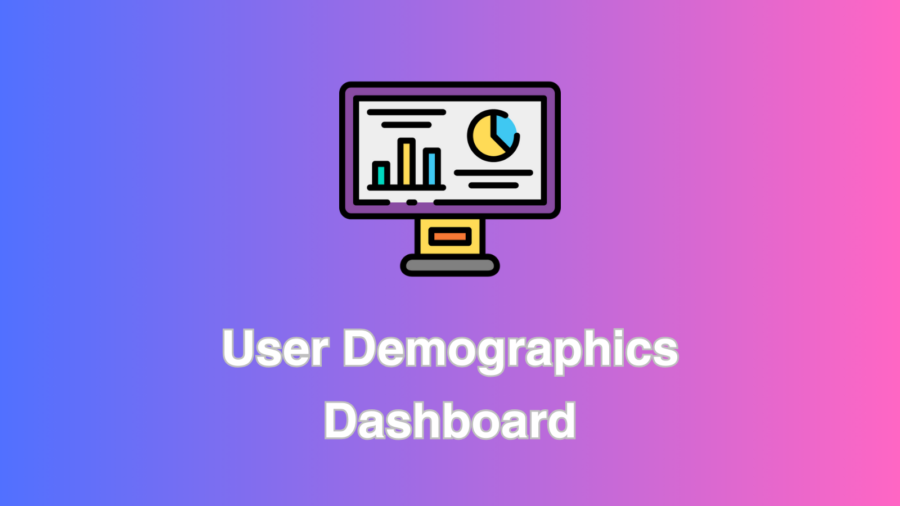Understanding your user base is paramount to success. One invaluable tool that has emerged to facilitate this understanding is the User Demographics Dashboard. This sophisticated analytics platform gives businesses and product managers a comprehensive overview of their user demographics, empowering them to make data-driven decisions and tailor their strategies to specific audience segments.
Why User Demographics Dashboard Matters
User Demographics Dashboard is the compass that guides businesses through the vast ocean of user data. It acts as a central hub, aggregating and visualizing key demographic information about the audience engaging with a product or service. From age and gender to location and interests, this dashboard unveils a treasure trove of insights that can shape marketing campaigns, refine product features, and enhance the overall user experience.
Creating Your User Demographics Dashboard
Let’s embark on a journey to create a User Demographics Dashboard from scratch. Follow these step-by-step instructions, and soon, you’ll have a powerful tool.
- Define Key Metrics:
Start by identifying the key demographic metrics that align with your business goals. Common metrics include age, gender, location, device usage, and interests. Understanding what information is crucial for your product will shape the design of your dashboard. - Choose Analytics Tools:
Select a robust analytics platform that can integrate with your product’s data sources. Google Analytics, Mixpanel, and Amplitude are popular choices. Ensure that the chosen tool provides the flexibility to extract and visualize the required demographic data. - Data Collection and Integration:
Establish a seamless data pipeline to collect and integrate demographic data into your analytics platform. This may involve integrating with third-party APIs, setting up data tracking within your product, or collaborating with your development team to ensure a smooth flow of information. - Design Your Dashboard:
Leverage the features of your chosen analytics tool to design an intuitive and visually appealing User Demographics Dashboard. Organize widgets for each key metric and consider incorporating interactive elements for a user-friendly experience. - Customization and Filters:
Tailor your dashboard to allow for customization and filtering options. This ensures product managers can zoom in on specific demographics or periods, providing a granular view of user behavior. The ability to segment data is a powerful feature that adds depth to your insights. - Real-time Updates:
Implement real-time data updates to keep your dashboard current. This feature is invaluable for product managers making timely decisions based on the latest user demographics. Regularly check and update the dashboard to reflect the evolving nature of your user base.
Unlocking Insights for Product Managers
Now that you have your User Demographics Dashboard in place let’s explore how product managers can leverage these insights to drive strategic decisions.
- Targeted Marketing Campaigns:
With a detailed understanding of user demographics, product managers can create targeted marketing campaigns that resonate with specific audience segments. For instance, if the dashboard reveals a significant user base in a particular geographic location, tailoring promotional content for that region can significantly boost engagement. - Feature Optimization:
By analyzing user demographics, product managers can identify which features are most popular among certain demographics. This insight enables them to optimize existing features or develop new ones that cater to the preferences of different user groups. For example, focusing on innovative and visually appealing features may be a strategic move if a younger demographic is predominant. - User Experience Refinement:
The User Demographics Dashboard is a powerful tool for enhancing the user experience. Product managers can pinpoint pain points specific to certain demographics and prioritize improvements. Whether streamlining the onboarding process for older users or optimizing the mobile experience for a tech-savvy audience, these insights drive targeted enhancements. - Retention Strategies:
Understanding the demographics of churn users can be instrumental in designing effective retention strategies. If the dashboard highlights a trend of younger users disengaging after a certain period, implementing personalized communication or exclusive features may be the key to retaining this segment.
Real-world Examples of User Demographics Dashboard Impact
Let’s delve into some real-world examples where User Demographics Dashboards were pivotal in shaping business strategies.
Example 1: E-Commerce Platform
An e-commerce platform discovered through its User Demographics Dashboard that a significant portion of its user base belonged to the 25-34 age group. With this insight, they revamped their marketing strategy to align with the preferences of this demographic, incorporating social media influencers and interactive content. This resulted in a notable increase in engagement and conversions within the targeted age group.
Example 2: Mobile Gaming App
A mobile gaming app analyzed its User Demographics Dashboard and found many users were playing the game on tablets. This prompted the development team to optimize the app’s interface for larger screens, enhancing this segment’s gaming experience. As a result, user satisfaction increased, leading to higher retention rates among tablet users.
In conclusion, the User Demographics Dashboard is a game-changer for businesses seeking to understand and cater to their diverse user base. By following the steps outlined for creating this dashboard and harnessing its insights, product managers can steer their strategies precisely, ensuring that every decision is rooted in a deep understanding of their audience. The examples underscore the tangible impact of user demographic insights, emphasizing that the road to success in the digital realm is paved with data-driven decisions.





